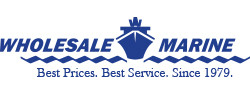-
- Low Price Guarantee
- Earn Captains Club Points Learn More
- Free Shipping over $99 Learn More
-

-
Total Price:
Add to Cart
Aquagard Water-Based Antifouling Paint
Using antifouling paint on your boat helps prevent organisms such as algae, barnacles, and slime from attaching to your vessel. Aquagard antifouling paint helps to prevent biofouling and protects your boat hull. Aquagard Water-Based Bottom paint is non-toxic and safe to use on most boat hulls, including fiberglass, wood, and even inflatables. There is no need to sand off existing paint, just remove any dirt and debris and apply Aquagard bottom paint. It goes on smoothly and is fast drying. Cleaning up is easy with just soap and water.
Maintaining and protecting your hull should be a top priority. Using Aquagard antifouling paint will help protect it from harsh elements such as sun and saltwater, along with other harsh marine elements. Aquagard antifouling paint helps extend the life of your boat and prevent deterioration.
Features:
- Ablative action repels barnacles & other growth
- Fast drying
- Water Based Aquagard bottom paint rolls on easily
- Soap & water clean-up
- Exceeds V.O.C. standards
- Controlled leach out
- Non-toxic fumes
- U.S. EPA approved
Specifications:
- Finish: Flat
- Coverage: 450 sq. ft/gal
- Number of Coats: 1-2
- Application Methods: Brush or roller
Available Colors:
![]()
Aquagard Antifouling Bottom Paint Application Instructions
Preparation:
It's important to remember that the adhesion of new paint is only as good as the paint that it is being applied over. Anywhere your old paint is flaking or lifting, the bottom needs to be stripped. If your boat’s bottom paint is in good condition, you only need to sand it a little with 80-grit sandpaper, clean it up, tape it off, and roll on another coat.
A hull that has not been previously painted has mold release wax on the fiberglass. This will interfere with paint adhesion unless you remove it. Clean the hull thoroughly with dewaxing solvent and plenty of clean rags. Sand the de-waxed hull lightly with 80-grit paper. Wipe down the area again to remove all sanding residue. Apply a primer.
Painting Application:
Mixing
- The antifouling in the bottom of the pint is often heavy and will settle to the bottom of the can. Be sure to take the time and effort to mix your paint properly. If you have a paint shaker, run it for at least 5 minutes to get the copper and the pigment evenly distributed throughout the paint.
- If you are doing it by hand, keep dredging up the copper off the bottom of the can. Each time you add to your roller tray, you will want to stir again to ensure consistency.
Application
- Roll Aquagard bottom paint onto the hull using a short-nap roller cover (usually 3/8 nap).
- Fill your paint tray with paint. Dip your roller and roll it up and down on the hull. Each time you refill the paint tray, first stir the paint in the can to keep the copper in suspension.
- By the time you work your way all around the hull, Aquagard Antifouling paint will be dry enough to overcoat. No sanding or other prep is needed between coats.
Note: Be sure to leave all zinc anodes unpainted. If you are installing new zincs, make sure you do not paint over their mounting locations. Good electrical contact is essential for zincs to do their job
California Residents:  WARNING
Cancer and Reproductive Harm -
P65Warnings.ca.gov
WARNING
Cancer and Reproductive Harm -
P65Warnings.ca.gov
Other Details
- Google Product Type:
- Antifouling
- Wiser:
- Yes
- Hull Material:
- Fiberglass


